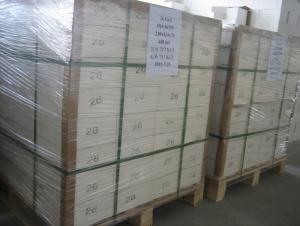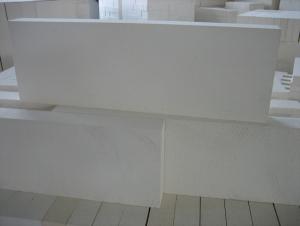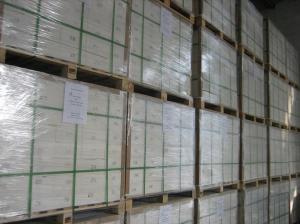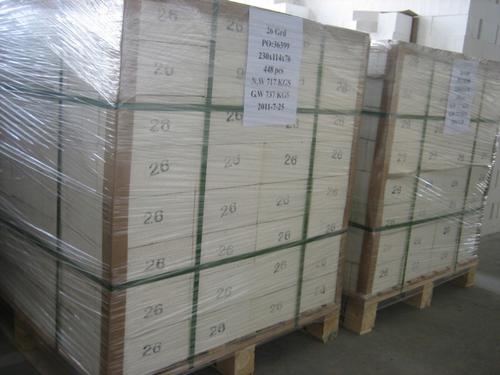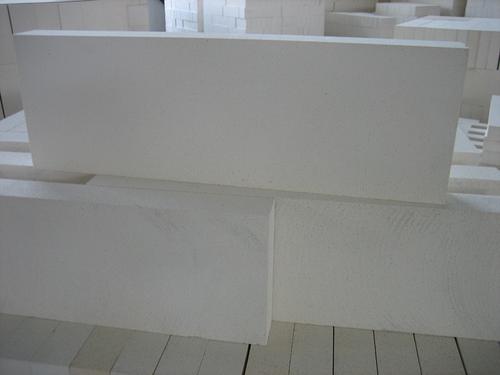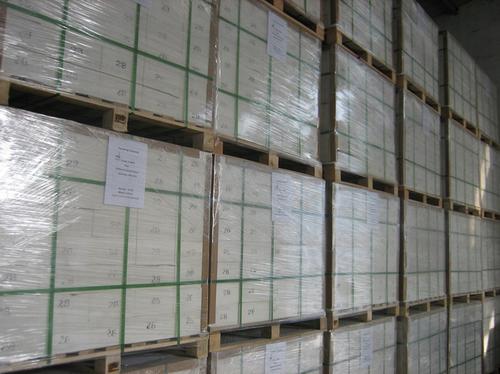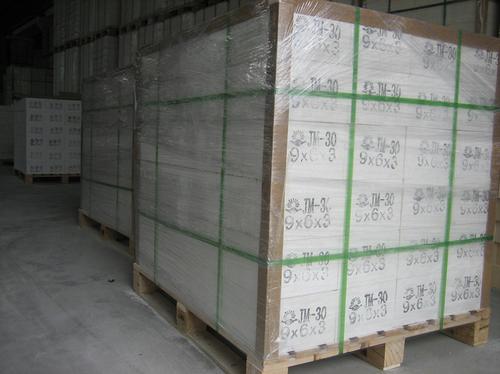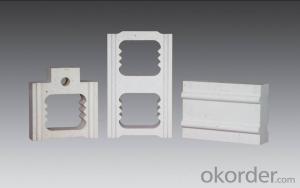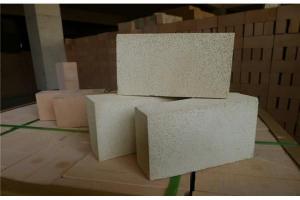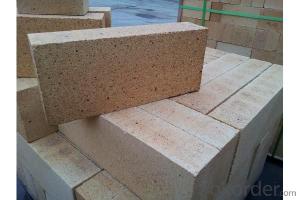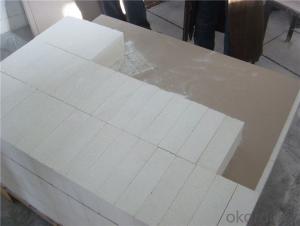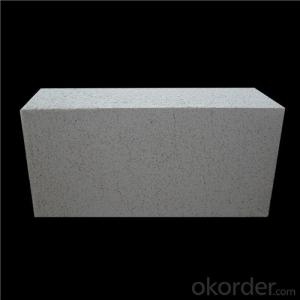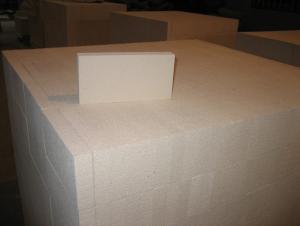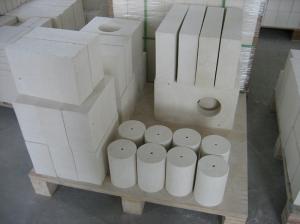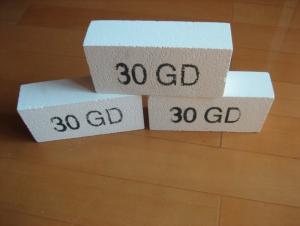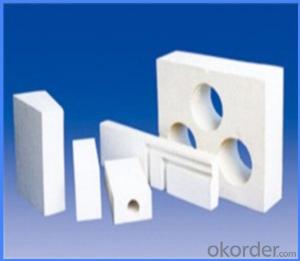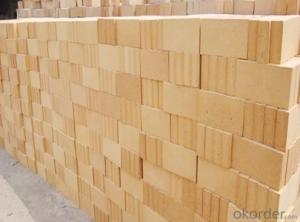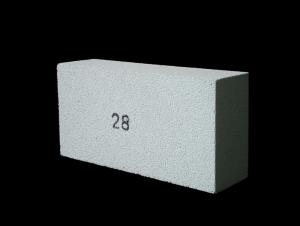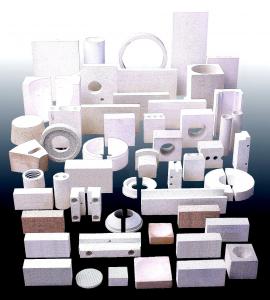Insulating Fire Brick - Refractory Mullite Insulating Refractory Brick JM 37
- Loading Port:
- Shanghai
- Payment Terms:
- TT OR LC
- Min Order Qty:
- 20 m.t.
- Supply Capability:
- 20 m.t./month
OKorder Service Pledge
OKorder Financial Service
You Might Also Like
Okorder series heat insulation brick
Okorder series thermal insulation brick is an effective, energy saving, low carbon, environmental protection advanced, according to the ASTM standard manufacturing products. Okorder series products have all kinds of materials in the field of metallurgy, industrial furnaces, aluminum, the best Li Ning petrochemical and insulation, electric power and glass ceramics. They can be used as part of an insulation or not to melt. Products have been widely used in the following furnace, achieved satisfactory results.
Application of heat preservation brick
Metallurgical Industry: blast furnace, hot blast furnace, heating furnace, etc..
Petrochemical Industry: ethylene cracking furnace, hydrogen furnace, the main furnace, heating furnace, etc..
Ceramic industry: roller kiln, kiln, etc..
Glass industry: glass furnace regenerator, etc.
Carbon industry: carbon furnace, etc..
Aluminum electrolysis industry: aluminum reduction cell, etc.
Other industries: tunnel kiln, shuttle kiln, etc..
Advantages of heat insulation brick
Low thermal conductivity: many air holes will bring good thermal insulation effect, energy saving.
High crushing strength: high crushing strength, volume stability.
Low heat storage: small heat storage, absorb more heat, energy-saving effect is obvious.
Chundu: High-speed Rail, low content of alkali metal impurities.
Accuracy: the size of the brick machining precision, cutting and grinding the special shape, speed up the brick.
Technical Data
ITEM | GJM30 | GJM28 | GJM26 | GJM23 |
Classification Temperature, ℉/℃ | 3000/1650 | 2800/1540 | 2600/1430 | 2300/1260 |
Bulk Density,g/cm³ | ≤1.0 | ≤0.9 | ≤0.8 | ≥0.5 |
Reheating Linear Change, % | ≤0.9 (1550℃,12 h) | ≤0.8 (1510℃,12 h) | ≤0.7 (1410℃,12 h) | ≤0.5 (1230℃,12 h) |
Al2O3 Content, % | ≥75 | ≥65 | ≥55 | ≥45 |
Fe2O3 Content, % | ≤0.5 | ≤0.6 | ≤0.7 | ≤1.0 |
Thermal Conductivity: | ||||
800℃, w/m.k | ≤0.39 | ≤0.37 | ≤0.35 | ≤0.18 |
1000℃, w/m.k | ≤0.43 | ≤0.41 | ≤0.39 | ≤0.20 |
1200℃, w/m.k | ≤0.48 | ≤0.46 | ≤0.43 | --- |
Insulating brick
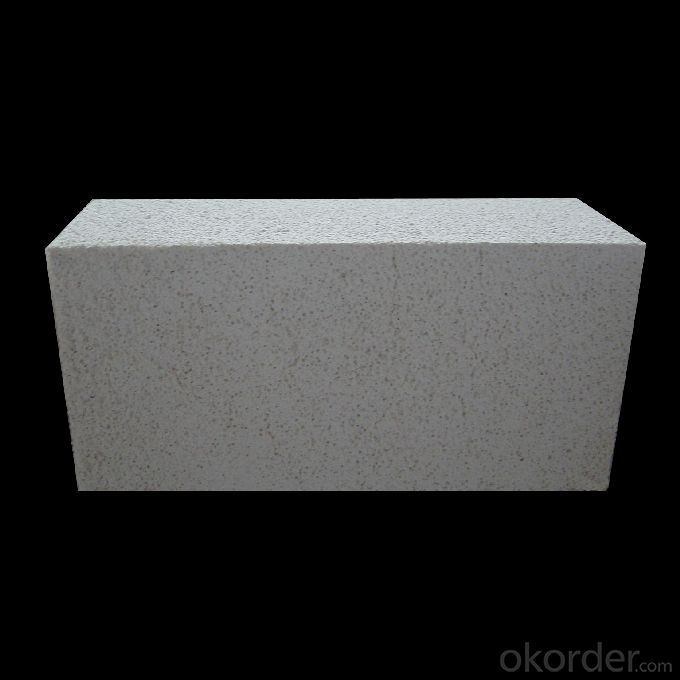
- Q: What materials are used to make insulating fire bricks?
- Various materials possessing high thermal insulation properties are used to manufacture insulating fire bricks. The primary material utilized in producing these bricks is kaolin clay, a type of clay renowned for its insulation characteristics. To enhance its insulating properties and increase its resistance to high temperatures, this clay is mixed with other additives such as alumina, silica, and zirconium. Furthermore, materials like sawdust, vermiculite, perlite, and calcium silicate are occasionally added to the mixture to further enhance the bricks' insulation capabilities. Collectively, these materials enable insulating fire bricks to exhibit low thermal conductivity, exceptional heat resistance, and excellent insulation qualities, rendering them suitable for a broad range of industrial and domestic applications.
- Q: What are the different types of insulating fire bricks available in the market?
- In the market, one can find a variety of insulating fire bricks. Some of the frequently encountered types are as follows: 1. Lightweight Fire Bricks: These bricks are crafted from lightweight and porous materials like expanded clay, vermiculite, or perlite. They possess exceptional insulation properties and are commonly utilized in scenarios where weight is a critical factor, such as lining kiln or furnace walls. 2. Ceramic Fiber Bricks: These bricks are formed by compressing and shaping ceramic fibers. They exhibit high insulation properties, low thermal conductivity, and can withstand high temperatures. Ceramic fiber bricks are frequently employed in applications that demand insulation in high-temperature environments, such as constructing industrial furnaces or ovens. 3. Calcium Silicate Bricks: These bricks are produced from a combination of lime, silica, and reinforcing fibers. They possess favorable thermal insulation properties and are resistant to thermal shock. Calcium silicate bricks are commonly employed in situations where high-temperature insulation is necessary, such as building boilers or incinerators. 4. Magnesia Bricks: These bricks are composed of highly refractory magnesium oxide. They possess excellent thermal insulation properties and can endure extremely high temperatures. Magnesia bricks are often used in environments requiring insulation at high temperatures, such as lining steel-making furnaces or glass melting tanks. 5. Vermiculite Bricks: These bricks are made from naturally occurring expanded vermiculite. They exhibit good insulation properties, low thermal conductivity, and resistance to high temperatures. Vermiculite bricks are commonly used in applications that necessitate lightweight insulation, such as constructing chimneys or fireplace surrounds. In conclusion, the selection of insulating fire bricks depends on specific requirements like desired insulation level, temperature resistance, and weight considerations for the particular application.
- Q: Can insulating fire bricks be used for sound insulation?
- Insulating fire bricks are primarily designed for thermal insulation in high-temperature applications, such as kilns and furnaces. While they do offer some level of sound absorption due to their porous structure, they are not specifically engineered for sound insulation purposes. Therefore, if your goal is to achieve effective soundproofing or noise reduction, it is recommended to use materials specifically designed for that purpose, such as acoustic panels, mineral wool, or other sound-absorbing materials.
- Q: Can insulating fire bricks be used in high-temperature insulation for cryogenic applications?
- Insulating fire bricks are not suitable for high-temperature insulation in cryogenic applications. Insulating fire bricks are designed to withstand temperatures up to around 2300°F (1260°C), which is well below the extremely low temperatures required for cryogenic applications. Cryogenic temperatures can range from -150°C to -273°C (-238°F to -459°F), and insulating fire bricks would not be able to provide adequate insulation at these temperatures. Instead, specialized materials such as aerogels or multi-layered insulation systems are commonly used for cryogenic insulation to ensure low heat transfer and maintain the extremely low temperatures required.
- Q: Can insulating fire bricks be used for insulation in incinerators?
- Yes, insulating fire bricks can be used for insulation in incinerators. These bricks are designed to withstand high temperatures and provide excellent thermal insulation, making them suitable for use in incinerators to minimize heat loss and improve energy efficiency.
- Q: Can insulating fire bricks be used in carbon black reactors?
- Yes, insulating fire bricks can be used in carbon black reactors. These bricks are designed to withstand high temperatures and provide excellent thermal insulation, which makes them suitable for use in carbon black reactors that operate at extreme temperatures.
- Q: Is it possible to recycle used insulating fire bricks?
- Yes, it is possible to recycle used insulating fire bricks. These bricks can be crushed, ground, or shredded, and then the resulting material can be used as a raw material in the production of new bricks or as an aggregate in construction materials. Recycling used insulating fire bricks helps to reduce waste and conserve resources.
- Q: Several kinds of energy-saving bricks
- Energy saving thermal insulation brick is a new type of energy-saving building insulation technology with inorganic composite materials as the main material. It is an ideal technology to replace the traditional wall insulation.
- Q: Are insulating fire bricks resistant to thermal expansion or contraction?
- Indeed, insulating fire bricks exhibit a remarkable resistance to thermal expansion and contraction. These bricks are composed of materials possessing minimal thermal conductivity, enabling them to endure elevated temperatures without experiencing substantial expansion or contraction. This characteristic renders them exceptionally well-suited for scenarios necessitating thermal stability and insulation, including kilns, furnaces, and various high-temperature settings.
- Q: Can insulating fire bricks be used for insulation in boilers?
- Certainly, insulation in boilers can make use of insulating fire bricks. These bricks are specially engineered to endure extreme temperatures and offer exceptional thermal insulation. Their thermal conductivity is minimal, resulting in a significant decrease in heat dissipation and an enhancement in the energy efficacy of boilers. Moreover, insulating fire bricks are lightweight and simple to install, rendering them a favored option for boiler insulation. They aid in preserving elevated temperatures within the boiler, facilitating efficient combustion and heat transfer, while simultaneously shielding the outer framework from excessive heat. All in all, insulating fire bricks are a dependable and efficient alternative for boiler insulation.
Send your message to us
Insulating Fire Brick - Refractory Mullite Insulating Refractory Brick JM 37
- Loading Port:
- Shanghai
- Payment Terms:
- TT OR LC
- Min Order Qty:
- 20 m.t.
- Supply Capability:
- 20 m.t./month
OKorder Service Pledge
OKorder Financial Service
Similar products
Hot products
Hot Searches
Related keywords
